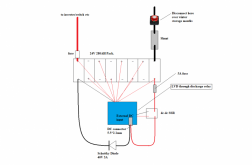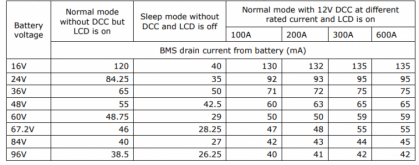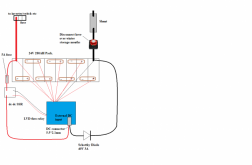Solarfun4jim
Solar seduced :-)
Conundrum....
Powering down a RV for winter storage, ideally whereby the negative terminal on the house battery is disconnected, but the BMS is still connected/powered via the sense cables, could the BMS take a 280AH pack down below LVD over a six month period, more so if the pack was put to storage at 50% capacity? I feel this leaves my pack potentially unprotected.
On the other hand, if you power the BMS through the external input, this generally means using an AC/DC adapter, connected to the inverter, which means that it must be left permanently powered up, which in itself draws the battery down at an even higher rate. At least this way, the LVD will protect the pack.
If i completely switch off the BMS, then i assume i need to reset all the configuration settings when powered back up at a later date? I cant get the latest software updates(i'm on version 4.0 at present)
Anyone know what the parasitic drain of a BMS8T is, when sitting there measuring the voltages?
Could the diagram below work, such that i still have LVD control but not need to run inverter? I know there might be a potential issue with grounds, but dont know if this has been resolved?

Powering down a RV for winter storage, ideally whereby the negative terminal on the house battery is disconnected, but the BMS is still connected/powered via the sense cables, could the BMS take a 280AH pack down below LVD over a six month period, more so if the pack was put to storage at 50% capacity? I feel this leaves my pack potentially unprotected.
On the other hand, if you power the BMS through the external input, this generally means using an AC/DC adapter, connected to the inverter, which means that it must be left permanently powered up, which in itself draws the battery down at an even higher rate. At least this way, the LVD will protect the pack.
If i completely switch off the BMS, then i assume i need to reset all the configuration settings when powered back up at a later date? I cant get the latest software updates(i'm on version 4.0 at present)
Anyone know what the parasitic drain of a BMS8T is, when sitting there measuring the voltages?
Could the diagram below work, such that i still have LVD control but not need to run inverter? I know there might be a potential issue with grounds, but dont know if this has been resolved?








